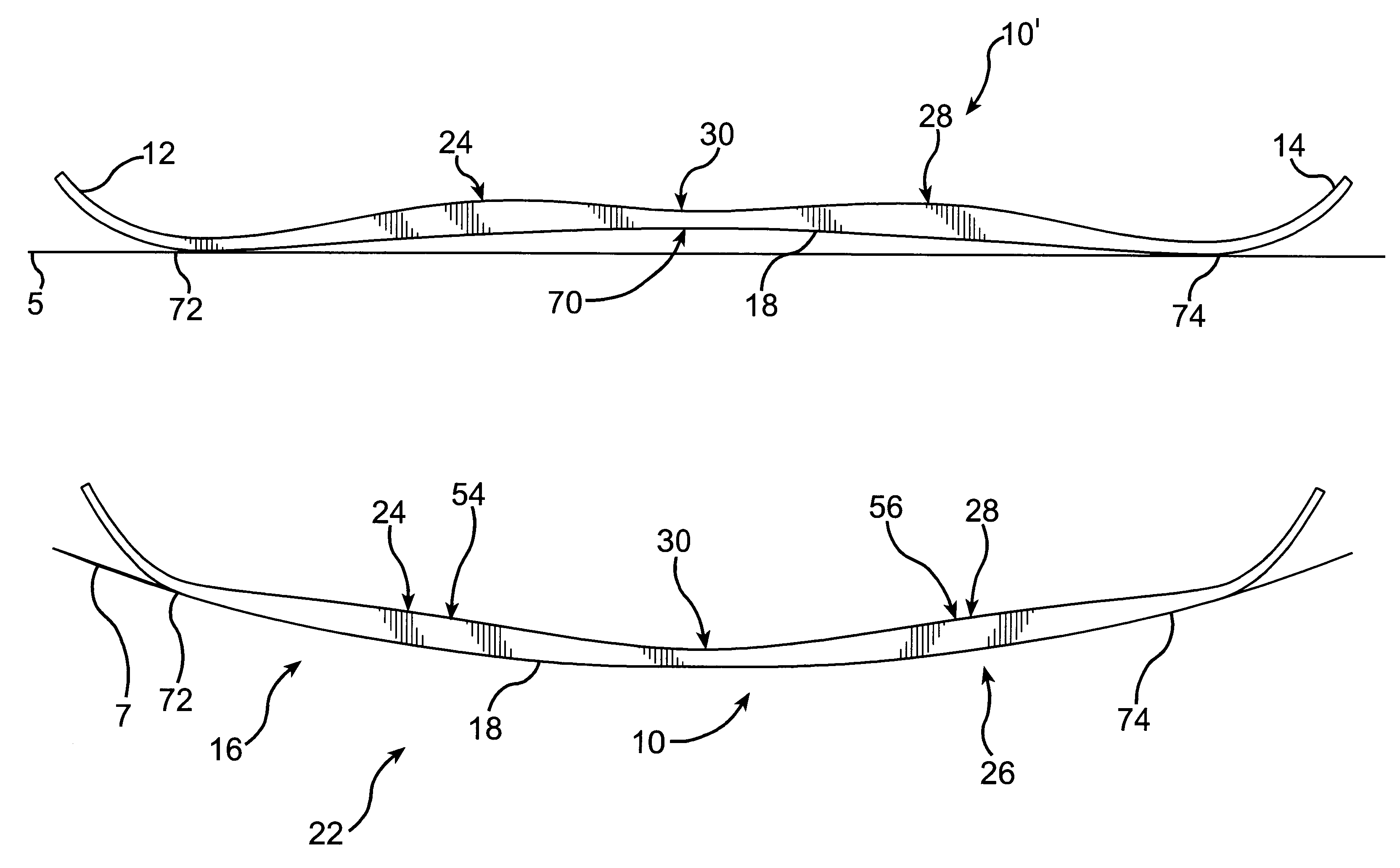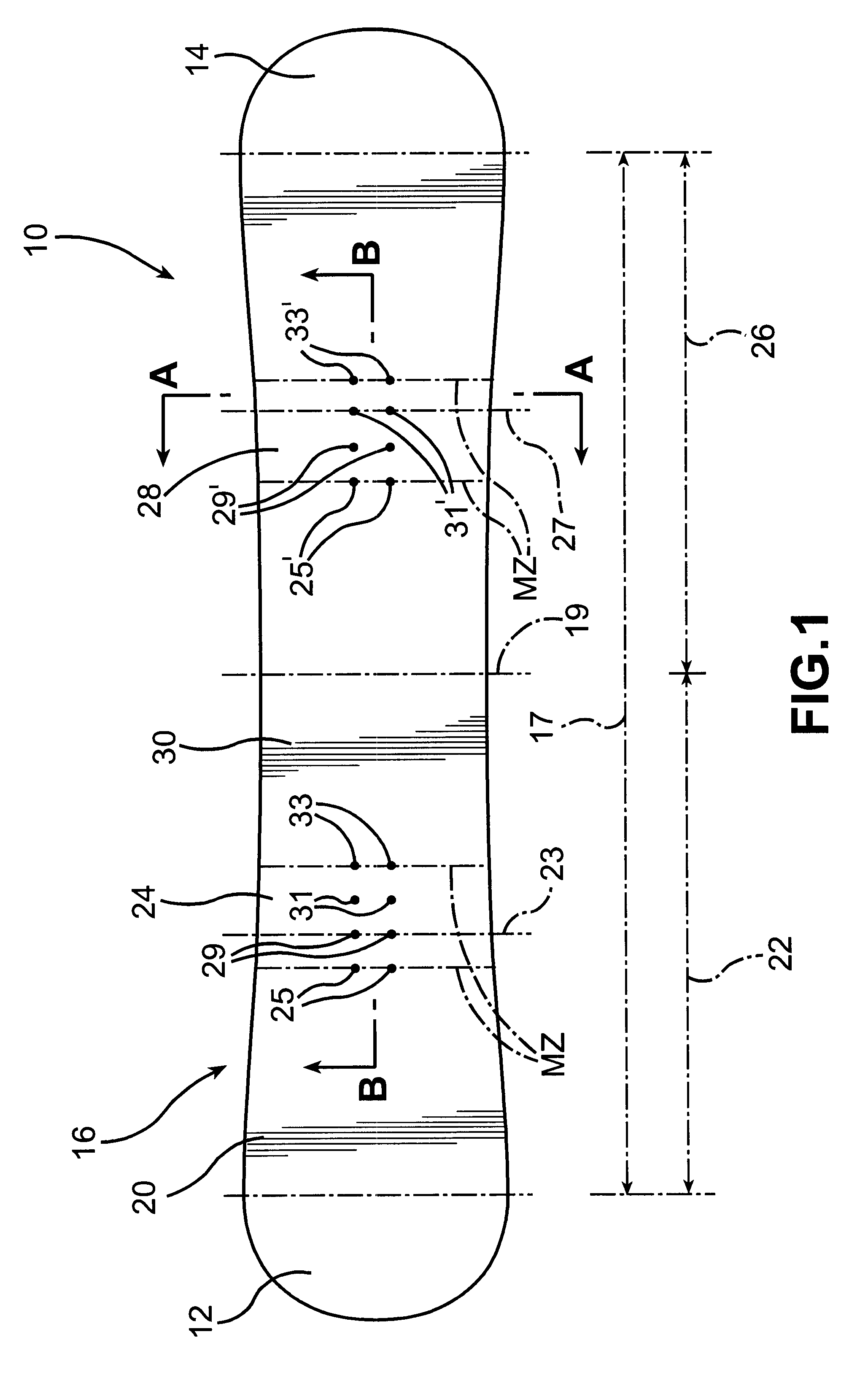Method of making a snowboard having improved turning performance
a technology of turning performance and making a snowboard, applied in the field of snowboards, can solve the problems of failure to account for the longitudinal shape of the ski in the conventional ski design, and inability to achieve the type of turn that is easiest to control with conventional snowboard design, etc., to achieve the effect of improving the turning characteristics
- Summary
- Abstract
- Description
- Claims
- Application Information
AI Technical Summary
Benefits of technology
Problems solved by technology
Method used
Image
Examples
Embodiment Construction
The broad goal of the present invention is to make a snowboard or ski that is capable of bowing into a desired curvature during turns. The present invention thus differs from conventional snowboard and ski design in that the present invention. takes into account the shape that the board or ski bends into during a turn. While the majority of the following detailed description of the present invention will be set forth with respect to snowboard design, it will be understood by a person of ordinary skill in the art that many of the principles of the method of the present invention may also be beneficially applied to the design of skis, as will be discussed briefly below in .sctn.B.
Thus, as opposed to conventional snowboard design, I have discovered that not only does it matter to take into account the fact that the board continues to bend after the riding edge makes full contact with the snow during a turn, but that the particular shape of the bend matters. Accordingly, with the presen...
PUM
 Login to View More
Login to View More Abstract
Description
Claims
Application Information
 Login to View More
Login to View More - R&D
- Intellectual Property
- Life Sciences
- Materials
- Tech Scout
- Unparalleled Data Quality
- Higher Quality Content
- 60% Fewer Hallucinations
Browse by: Latest US Patents, China's latest patents, Technical Efficacy Thesaurus, Application Domain, Technology Topic, Popular Technical Reports.
© 2025 PatSnap. All rights reserved.Legal|Privacy policy|Modern Slavery Act Transparency Statement|Sitemap|About US| Contact US: help@patsnap.com



